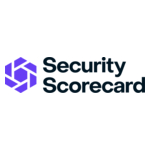SecurityScorecard Research Finds 48% of Global Critical Manufacturing At Significant Risk of Breach

Global cybersecurity risk measurement standard is needed to build cyber resilience and address critical infrastructure trust deficit
DAVOS, Switzerland–(BUSINESS WIRE)–SecurityScorecard, the global leader in cybersecurity ratings, today announced the results of its new report, Addressing the Trust Deficit In Critical Infrastructure, which revealed 48% of critical manufacturing organizations ranked “C,” “D,” or “F” on SecurityScorecard’s security ratings platform. Published during the World Economic Forum (WEF) Annual Meeting, the report analyzed the current state of cyber resilience in the critical infrastructure sectors such as Energy, Chemical, Healthcare, and others, as designated by the Cybersecurity and Infrastructure Security Agency (CISA). Organizations with an “A” security rating are 7.7 times less likely to sustain a breach than those with an “F” rating.
“Security ratings are a trusted barometer of cyber resilience and the time is now for policymakers and organizations to make cyber risk measurement mandatory,” said Aleksandr Yampolskiy, co-founder and CEO of SecurityScorecard. “Cyberattacks in the last 10 years have gotten much worse, more complex, and increasingly have targeted critical infrastructure, thereby undermining the public’s trust in the cyber resilience of our global economy.”
SecurityScorecard provides comprehensive security ratings, automated assessments, and guidance from industry experts, providing a patented and easy-to-understand A-F graded scorecards for improved communication, effective compliance reporting, and more informed decision-making.
According to the World Economic Forum, only 19% of cyber leaders feel confident that their organizations are cyber resilient. SecurityScorecard recently joined the World Economic Forum Global Innovators Community, contributing to WEF’s Centre for Cybersecurity’s initiative to address systemic challenges, improve trust, and build cyber resilience. Yampolskiy is attending the WEF Annual Meeting in Davos to engage with the world’s foremost public- and private-sector leaders on mitigating global cyber risk, including within critical infrastructure.
Critical Manufacturing Patching Cadence Falls Amid Escalating Attack Cadence
Cyber incidents affecting critical infrastructure, once comparatively rare, have become far more frequent in recent years as nation-states and their proxies escalate their pursuit of geopolitical objectives. Data from the Federal Bureau of Investigation showed that 14 of the 16 sectors considered critical infrastructure by the U.S. government experienced at least one ransomware attack in 2021.
SecurityScorecard assessed these industries to measure their current state of cyber resilience. It found that critical manufacturing is highly vulnerable based on analysis of all organizations under that category in The Forbes Global 2000 list. SecurityScorecard considers 10 factors when developing an organization’s security rating. Of those 10, the patching cadence ‘factor’ for critical manufacturing experienced a significant drop from 2021 to 2022, moving from 88 (B) to 76 (C).
High and Medium-Severity CVEs Strain Resources
The decline in patching is likely due to an increased volume of vulnerabilities. Critical manufacturing experienced a 38% year-over-year increase in high severity vulnerabilities. In 2022 alone, 76% of critical manufacturing organizations have high and medium-severity CVEs.
These CVEs may, in some cases, facilitate ransomware groups’ targeting of organizations in the sector. Manufacturers experienced an increase in malware infections from 2021 to 2022. In 2022, 37% of critical manufacturing organizations had malware infections.
“While investing in more technology might seem burdensome to resource-constrained critical infrastructure operators, the reality is that cybersecurity ratings technology is extremely cost-effective, especially when you consider the catastrophic cost of a breach is $9.44 million on average for U.S. organizations,” continued Yampolskiy. “By leveraging security ratings, these organizations have a simple way to build resilience and make more informed decisions to strengthen their cyber defenses by confidently measuring risk and quantifying the trustworthiness of their partners, contractors, third-and fourth-party vendors, and supply chains.”
To view the full research paper, please visit: https://resources.securityscorecard.com/davos-2023/addressing-the-trust-deficit
About SecurityScorecard
Funded by world-class investors including Evolution Equity Partners, Silver Lake Waterman, Sequoia Capital, GV, Riverwood Capital, and others, SecurityScorecard is the global leader in cybersecurity ratings with more than 12 million companies continuously rated. Founded in 2013 by security and risk experts Dr. Aleksandr Yampolskiy and Sam Kassoumeh, SecurityScorecard’s patented rating technology is used by over 30,000 organizations for enterprise risk management, third-party risk management, board reporting, due diligence, cyber insurance underwriting, and regulatory oversight. SecurityScorecard is the first cybersecurity ratings company to offer digital forensics and incident response services, providing a 360-degree approach to security prevention and response for its worldwide customer and partner base. SecurityScorecard continues to make the world a safer place by transforming the way companies understand, improve and communicate cybersecurity risk to their boards, employees and vendors. Every organization has the universal right to their trusted and transparent Instant SecurityScorecard rating. For more information, visit securityscorecard.com or connect with us on LinkedIn.
Contacts
Derek Delano
SecurityScorecard
ddelano@securityscorecard.io(646) 457-4513








